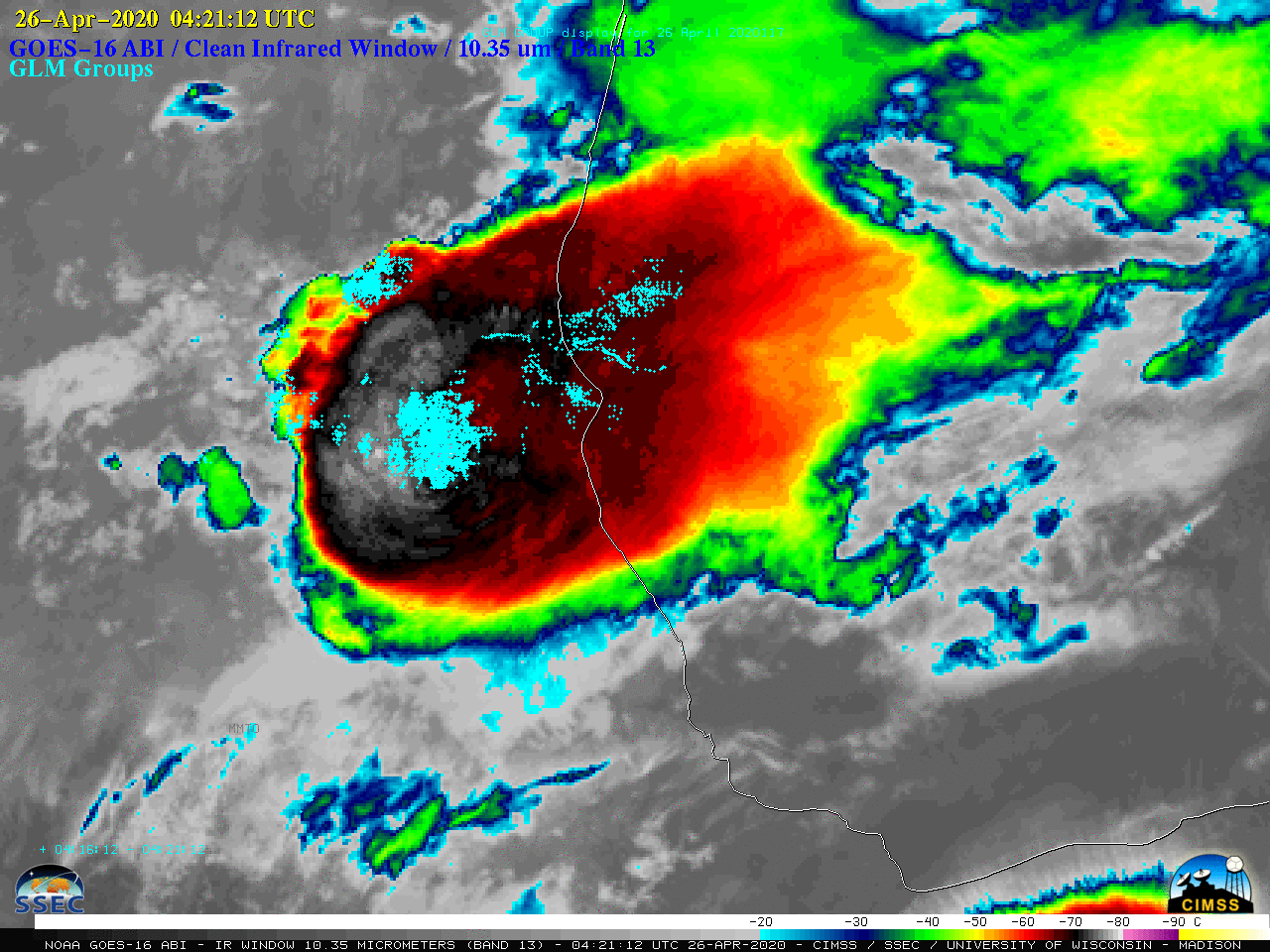Prolific lightning-producing MCS in eastern Mexico

GOES-16 “Clean” Infrared Window (10.35 µm) images, with and without GLM Groups plotted in cyan [click to play animation | MP4]
![GOES-16 "Clean" Infrared Window (10.35 µm) images, with and without GLM Groups plotted in cyan, at 0421 UTC on 26 April [click to enlarge]](https://cimss.ssec.wisc.edu/satellite-blog/images/2020/04/200426_0421utc_goes16_infrared_glmGroups_Mexico_mcs_anim.gif)
GOES-16 “Clean” Infrared Window (10.35 µm) images, with and without GLM Groups plotted in cyan, at 0421 UTC on 26 April [click to enlarge]
![NOAA-20 VIIRS Infrared Window (11.45 µm) and Day/Night Band (0.7 µm) images at 0841 UTC [click to enlarge]](https://cimss.ssec.wisc.edu/satellite-blog/images/2020/04/200426_0841utc_noaa20_viirs_infrared_dayNightBand_Mexico_mcs_anim.gif)
NOAA-20 VIIRS Infrared Window (11.45 µm) and Day/Night Band (0.7 µm) images at 0841 UTC [click to enlarge]
![GOES-16 True Color RGB images [click to play animation | MP4]](https://cimss.ssec.wisc.edu/satellite-blog/images/2020/04/GOES-16_ABI_RadF_true_color_2020116_132016Z.png)
GOES-16 True Color RGB images [click to play animation | MP4]
So after breaking the #lightning archive tool a few times (because of searching a time period with too much lightning)…I’ve counted up the dots between 2000 UTC 25 April and 1500 UTC 26 April. 1.1 million! https://t.co/yQrmbONPQ0 pic.twitter.com/K0eedrOAdC
— Ch?is Vagas|?y (@COweatherman) April 26, 2020


![Plots of rawinsonde data from Veracruz, Mexico [click to enlarge]](https://cimss.ssec.wisc.edu/satellite-blog/images/2020/04/200425_20426_MMVR_RAOBS.GIF)